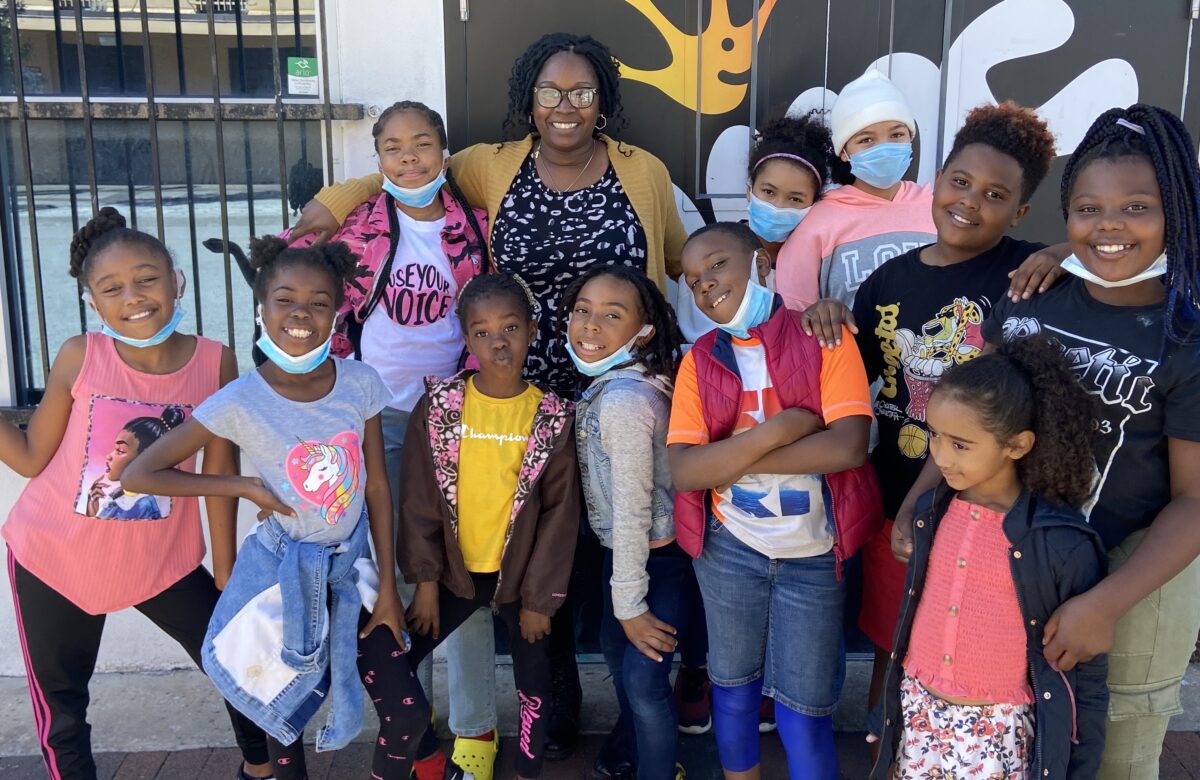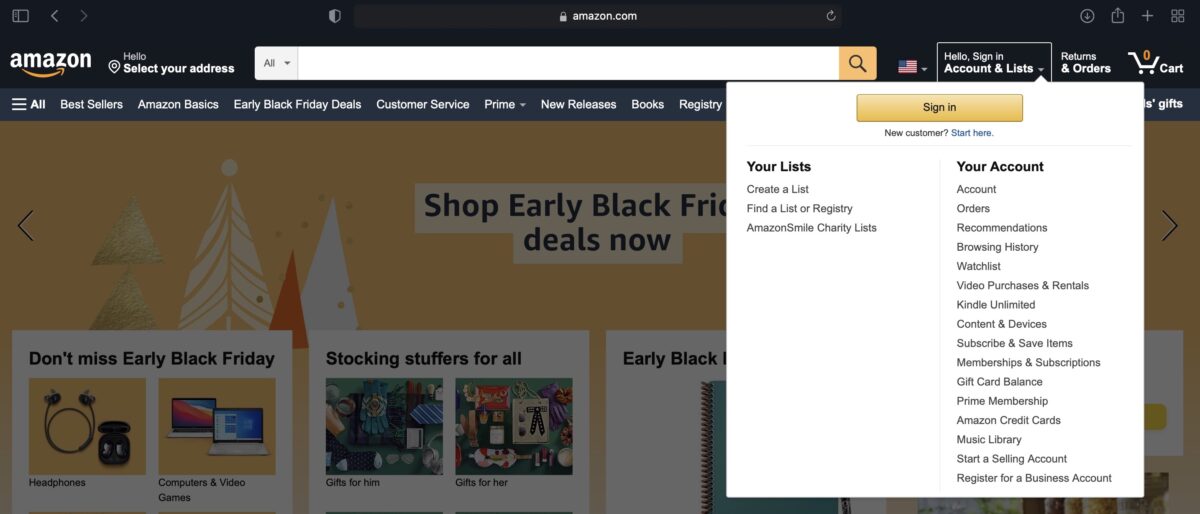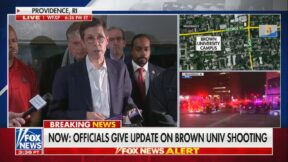Social Media Isn’t All Bad: Steal My Idea and Do Some Good In Your Community For the Holidays

Photo provided by Shantá Barton-Stubbs.
It’s strange enough for a writer to beg people to steal her ideas, but I will top that with a perhaps even more shocking comment: social media is not all bad.
I’m absolutely serious. Thanks to some warmhearted people using Facebook, Twitter, and Amazon as a force for good, 28 kids at a youth center in downtown Orlando will have brand new coats next week.
Twenty-eight kids may not seem like a very newsworthy story in a country of more than 300 million, but I was able to use my online networks to amplify a single idea and now I’m hoping to inspire some of you to literally steal my idea and do the same in your own neighborhoods. And while I recognize the many, many, many criticisms of the way Big Tech companies operate, in this instance they provided simple and free tools that I could easily use — and I am more than happy to take advantage of that to help some kids.
In 2018 I was introduced to Shantá Barton-Stubbs, the founder and director of the New Image Youth Center, which provides after-school and summer programs to children in the Parramore neighborhood of Orlando. Barton-Stubbs and I both graduated from Edgewater High School (she was there several years after I attended), which is districted to include some of Orlando’s wealthiest neighborhoods, as well as some of its poorest.
THREAD, PLEASE SHARE: This is my awesome friend Shanta Barton-Stubbs with some of the kids at the @NewImageYouth youth center she founded to help kids in the Parramore neighborhood of our hometown of #Orlando. /1 pic.twitter.com/scV0Ofhrae
— Sarah Rumpf (@rumpfshaker) November 24, 2021
The Parramore neighborhood is nestled on the edge of the downtown business district (the property NIYC rents is in the shadow of the stadium where the Orlando City soccer team plays) and has been the historical core of our city’s African-American community since it was built in the late 19th century. For several decades, it has also been a socioeconomically depressed area. The children whom NIYC serves have many of the statistical “strikes” against them to make it more challenging for them to succeed: most have lived their entire lives near or below the poverty line and some of them have had to deal with housing instability and homelessness. And yet, with the support of NIYC and the dedicated team Barton-Stubbs has assembled, the children aren’t just graduating high school, they’re going on to college.
Central Florida doesn’t typically get very cold weather, but in January 2018, there was a cold snap with temperatures plummeting below freezing. The NIYC kids desperately needed warm coats, hats, and gloves that they simply didn’t have, and the center put out a emergency call to the community for help. I interviewed Barton-Stubbs for The Capitolist, a Florida-based political news site I had helped launch, and the combination of local residents dropping off donations and others sending items by Amazon Prime delivery took care of the urgent need.
I stayed in touch with Barton-Stubbs and each winter I used my Amazon affiliate earnings (qualifying purchases from an affiliate link earn me a small percentage) plus a little extra to send a few coats. I had found an Amazon brand fleece zip-up jacket that came in a variety of colors and — I think anyone who’s ever cared for young children will agree this is important — was machine washable. The kids liked the coats a lot. They weren’t the fanciest or trendiest, but they weren’t dorky either, and they were warm and cozy and held up well.
I’ve been using my Amazon affiliate money to send a few Amazon brand zip up fleece coats to the kids each year. The coats are a soft warm fleece, they hold up well, and are machine washable. They’re cute and cozy. /3 pic.twitter.com/Il0vY1Q349
— Sarah Rumpf (@rumpfshaker) November 24, 2021
This year, we ambitiously decided to try and get coats for every child who attended NIYC’s programs and needed one. Barton-Stubbs sent me a list of sizes and I created an Amazon list with a variety of the darker colored coats, so they would last longer. I made sure to pick colors that were in stock and able to be shipped quickly.
I posted the list on Facebook and Twitter, asked my friends and followers to share the link and consider buying a coat. People started buying them right away. We originally started with 17 and then identified several more children who needed a coat, for a total of 28.
FIVE! FIVE COATS already on the way! AH AH AH!
Thanks y’all so much!!! pic.twitter.com/Cikzv2YtJ5
— Sarah Rumpf (@rumpfshaker) November 24, 2021
In less than 24 hours, all 28 coats were purchased and on their way. Barton-Stubbs texted me that it was “amazing news” to know that all her kids would have coats. “This has absolutely blown my mind,” she wrote.
No child should do without “something as simple as a jacket,” she added. “It was absolutely amazing for heroes from all over to immediately fulfill the need for the youth of NIYC.”
“There are no items in this List” 😍🥰 pic.twitter.com/VM58SLM3w6
— Sarah Rumpf (@rumpfshaker) November 24, 2021
You’re probably familiar with the story about a boy who is walking along the beach and picking up starfish to throw them back into the ocean, so they wouldn’t die when the tide went out and left them stranded. He explains very eloquently his motivation and how small acts can indeed make a big difference:
The man laughed to himself and said, “Do you realize there are miles of miles of beach and hundreds of starfish? You can’t make any difference.”
After listening politely, the boy bent down to pick up another starfish and threw it into the surf. Then, he smiled at the man and said, “I made a difference to that one.”
There are many ways to be heroes for one starfish at a time, and it adds up! Like many Americans, I don’t personally have the resources to write a check with lots of zeros and commas to sponsor a major charitable project. I can’t solve childhood poverty or any of the countless other challenges facing our country. But with the help of my family, friends, and online network, I helped make a difference for twenty-eight kids. Twenty-eight kids in my hometown are going to have brand-new coats by next week. Twenty-eight kids are going to be warm and cozy.
And that feels absolutely amazing. “It feels good to do good,” I messaged a friend of mine who had donated a coat.
Not everyone has as large of a social media network as I’ve built over the past decade, but there is a lot of good that we can all do in our local neighborhood. I would like to encourage all of you to steal my idea and adapt it for your own interests and the needs of your community. Here are five simple steps you can follow:
1. Identify a project that moves you
Maybe it’s another youth center like NIYC, or a perhaps a domestic violence shelter, homeless ministry, or organization supporting foster children. Local animal shelters and humane societies depend on community support as well. Find a group that matches your interests, volunteer with them, and talk with the staff about what programs they offer, what challenges they are facing, what items they’re constantly having to buy or are in short supply, etc.
2. Identify a specific, small-focus need that would benefit that project
You’re not trying to fund an entire homeless shelter or underwrite an entire college scholarship. Find something that is specific, tangible, easy to visualize, and that has an affordable budget. You could try to send a new packet of socks for the people served at your local homeless shelter (socks are one of the most requested items), a new backpack at the beginning of the school year for kids at a youth center, toiletry kits for women at a shelter, new suitcases for foster kids (they often don’t have one and have to move with their belongings in a garbage bag), sponsor a week of food for a pet shelter, and so on.
I picked the coats we used for this effort because I knew they were a good quality from sending some of the same brand and style over the past few years, and the price point was very accessible. The boys’ and girls’ sizes were about $15 each and the adult sizes (some of the kids were teenagers in high school and needed adult sizes) were $29. That made it easy for people to feel like they could afford to help, and — perhaps most importantly — that even a small donation would have a real impact.
3. Create an Amazon list
Log into your Amazon account (I found this easier to do on the desktop website rather than the mobile app). Under the menu that pops up when you move your cursor to “Accounts & Lists,” and under “Your Lists,” click “Create a List.”

The next screen asks you to create a name for the list (it starts out as private until you make it public in a later step). On the right side of the screen, click “More” and then “Manage List.”

On the menu that pops up, set the “Privacy” to “Public,” select “An organization” under “List is for,” type the organization’s name in “Recipient,” and add their website and a short description of what you’re trying to do.
Under “Shipping Address,” select “Create New” and put in the organization’s mailing address. This is an absolutely critical step so that your supporters will be able to easily click and send from the list just like they buy their own Amazon items without having to worry about entering in the address correctly.
Check “Third party shipping agreement.”
Leave unchecked “Keep purchased items on this List” (so people don’t buy unnecessary duplicates), “don’t spoil my surprises” (that’s if you were making a gift registry for yourself), and “default list.”
Click “Save changes.”
Now all you’ll need to do is search for the items you want to add to the list, and right under the buttons to add the item to your cart, you’ll see a pull down menu for “Add to List.” Select the List you just created and you’re all done.
4. Share with your family, friends, coworkers, followers
Post the direct link to the Amazon list on your social media networks, email it, text it, send it by carrier pigeon, smoke signal, whatever method you use to communicate with your people.
Include something personal about why you care about this cause and why you’re trying to fulfill this specific need. Photos are great and significantly increase the interaction and shares a social media post will get.
Here’s the thread I posted on Twitter if you want some ideas. I also posted it on my personal Facebook page and a Facebook group we have for Edgewater High alumni.
Keep people updated and try to thank everyone who replies that they helped out.
5. Encourage direct donations as well
Most likely, the group you’re supporting is a 501(c)3 nonprofit organization and has broader needs that are supported by tax-deductible donations. Some of your network may be moved by your support for this organization and want to donate more, or, like what happened after the list of coats was finished so quickly, they might have missed the chance to send something from your list and still want to help.
You can visit the New Image Youth Center’s website at newimageyouth.org and the direct link to their donation page is here.
Please consider buying a coat for these great kids. I’m trying to send 17 coats. 😊❤️
If you would like to help support NIYC, they’re a 501(c)3 and you can donate at https://t.co/Uozq5tWZQe
THANK YOU! 6/end
— Sarah Rumpf (@rumpfshaker) November 24, 2021
Good luck! I would love to hear about how you’ve stolen this idea and helped out in your own communities — send me a tweet at @rumpfshaker.
Happy Thanksgiving to all of our readers. May you and your loved ones have an enjoyable and memorable time together.
This is an opinion piece. The views expressed in this article are those of just the author.




